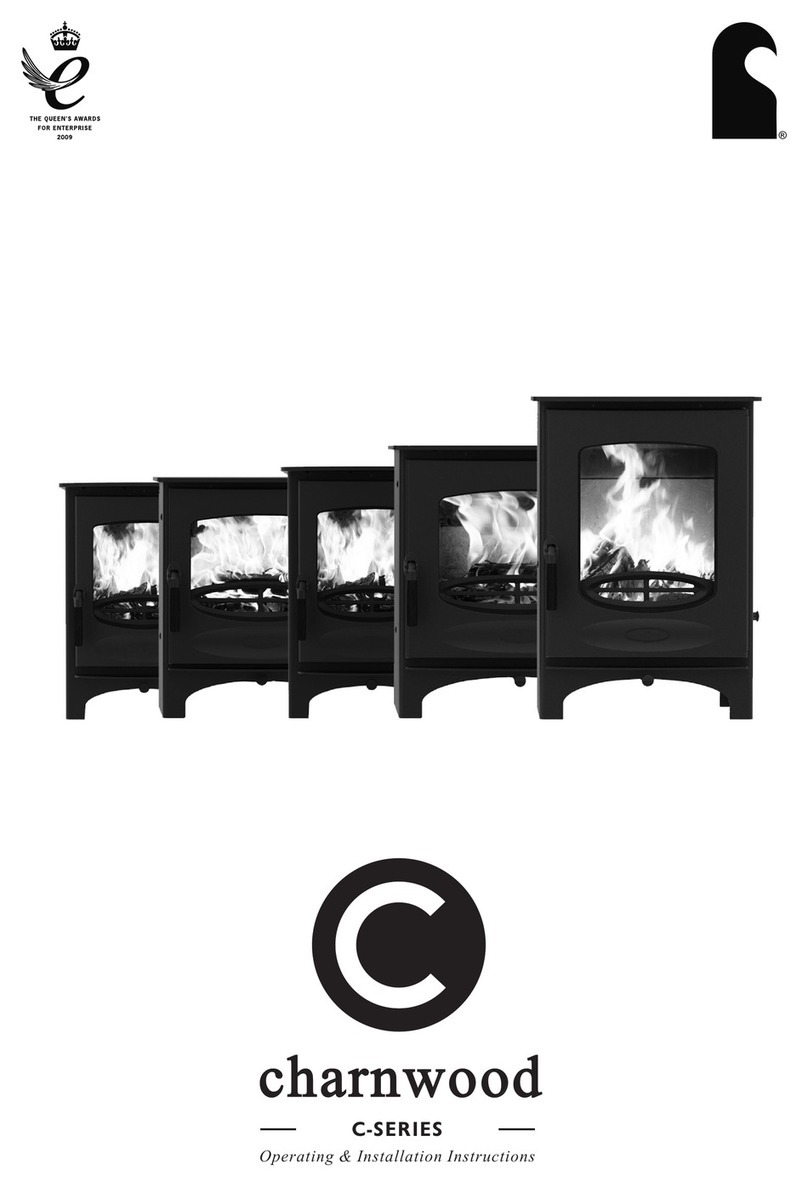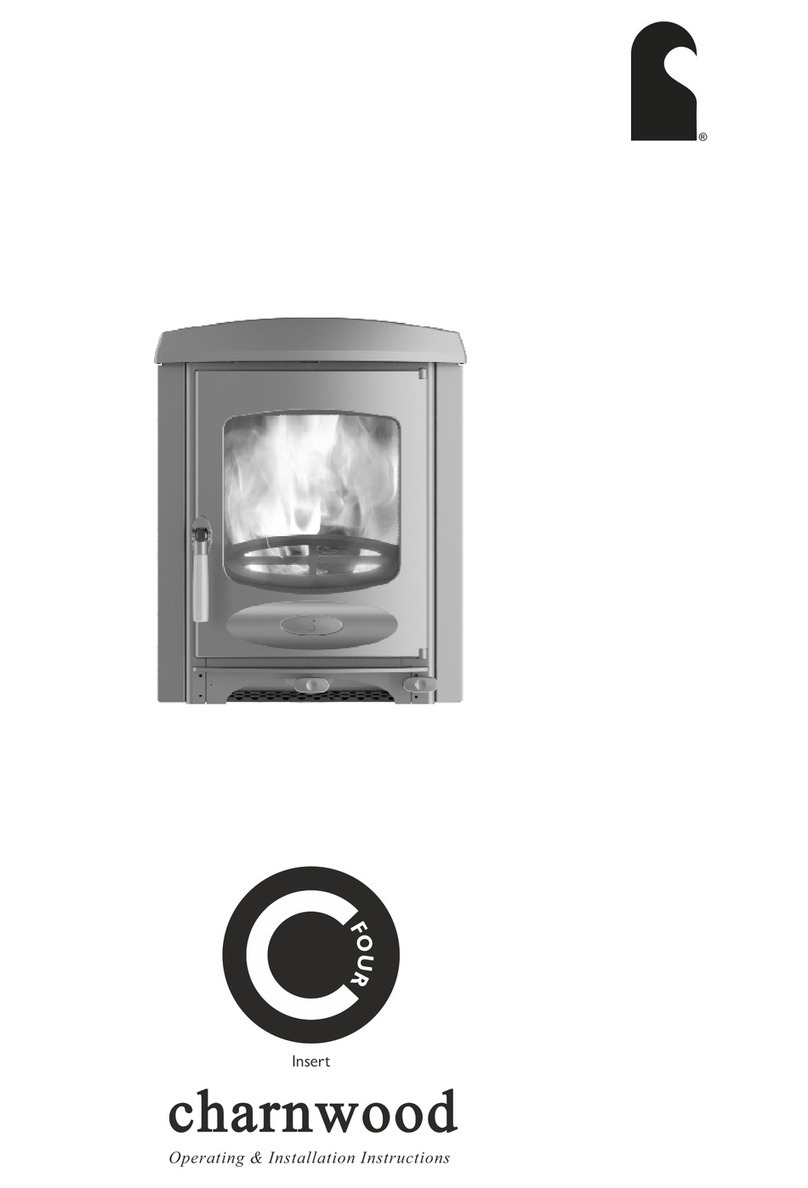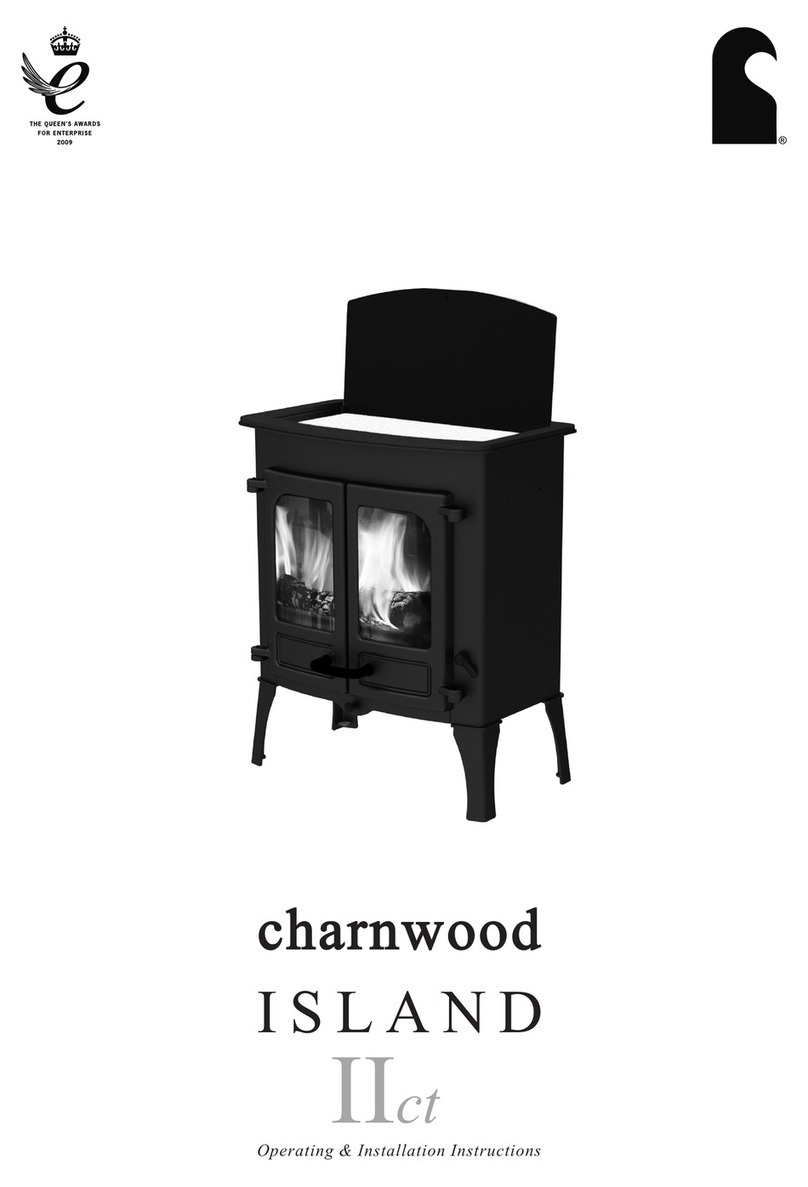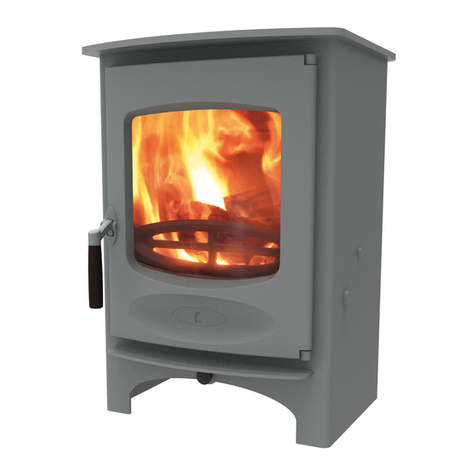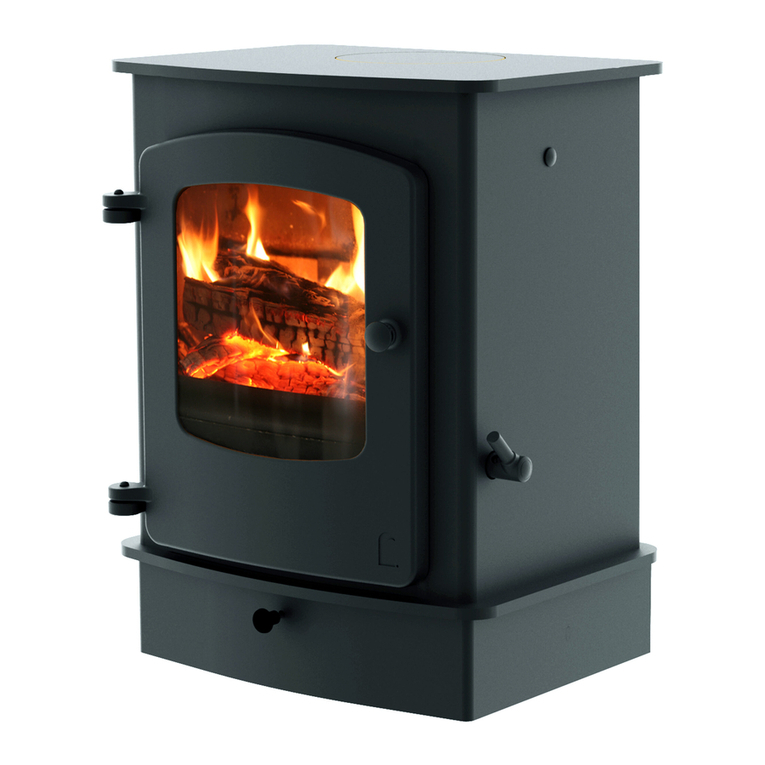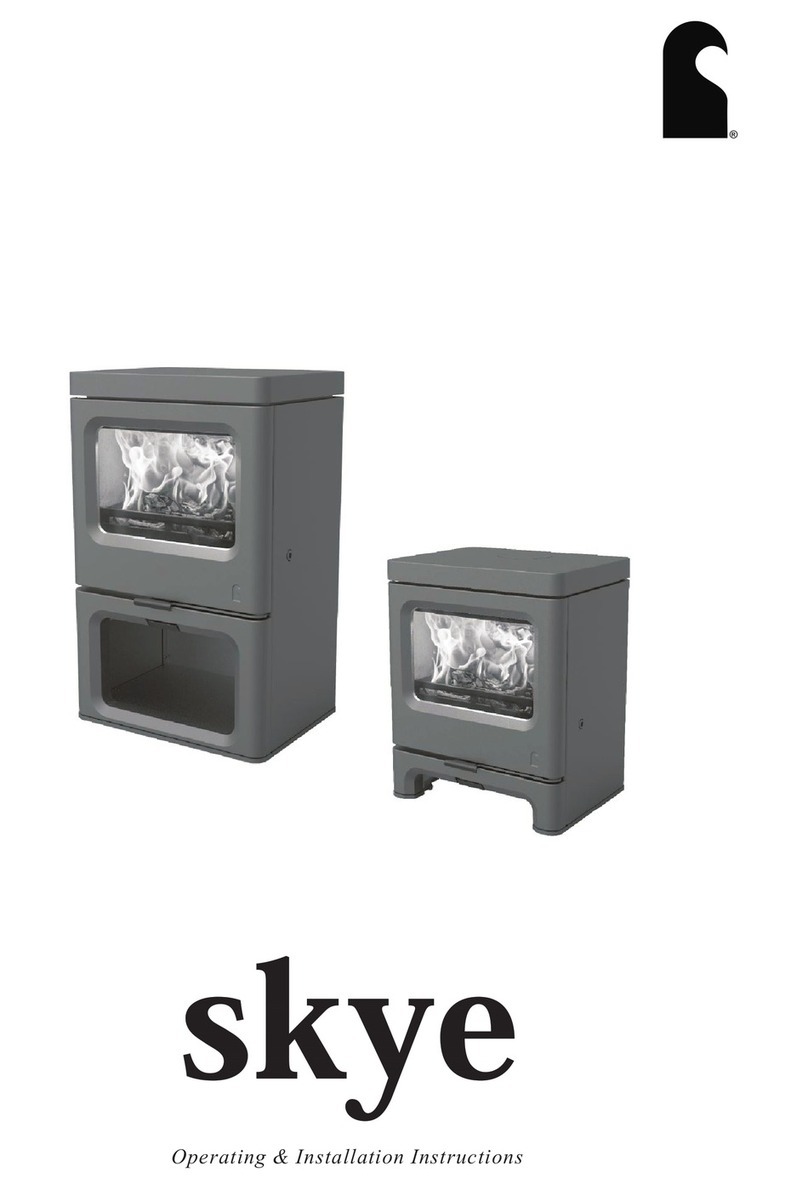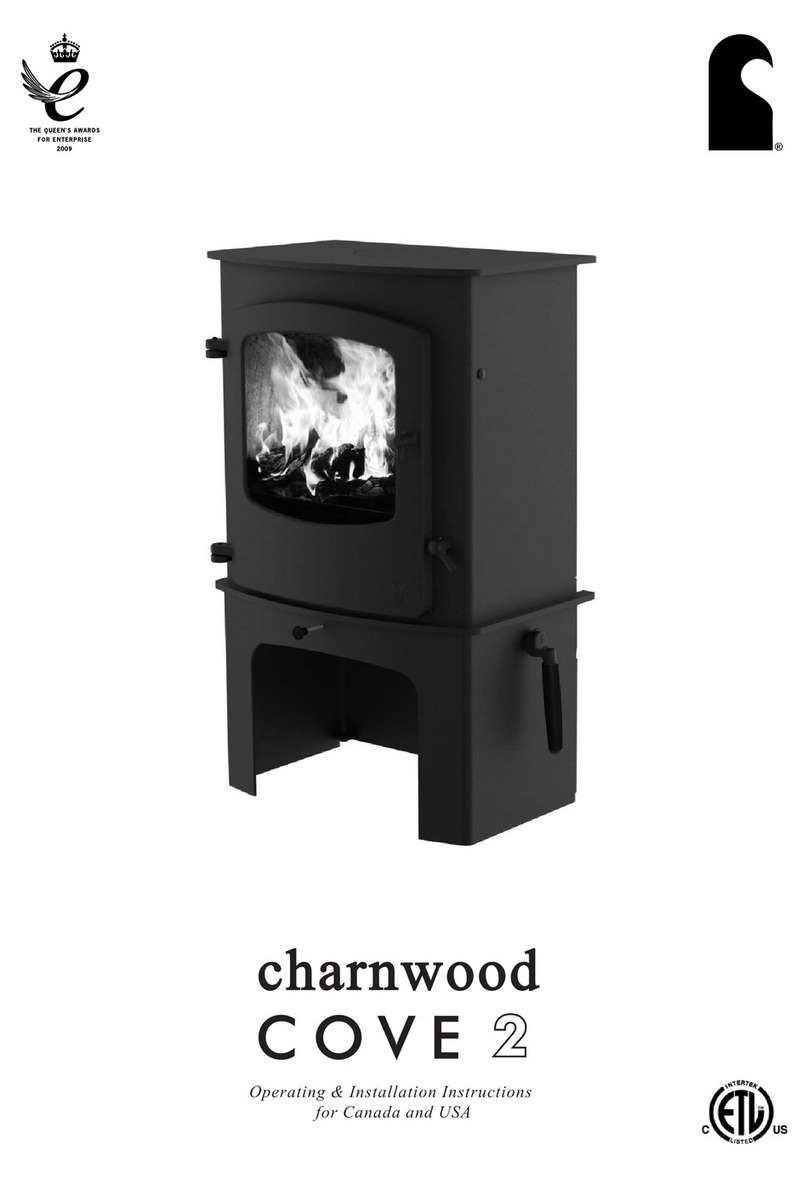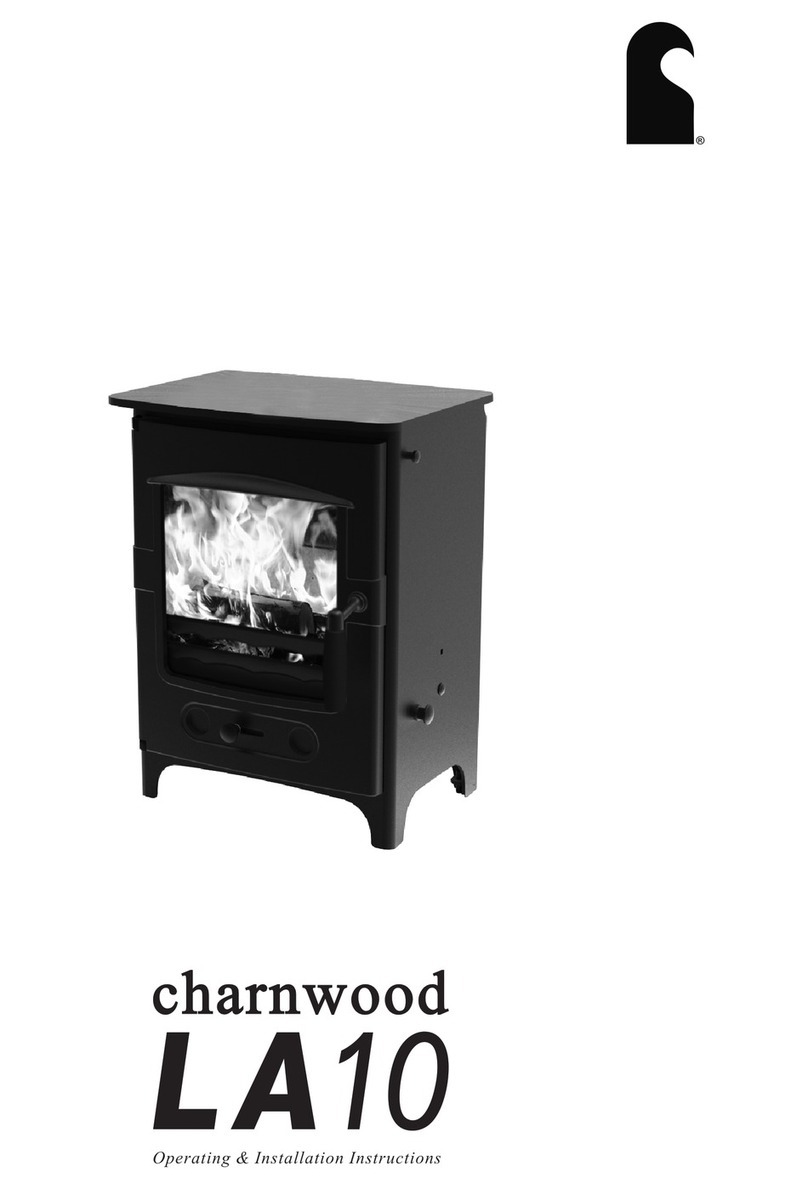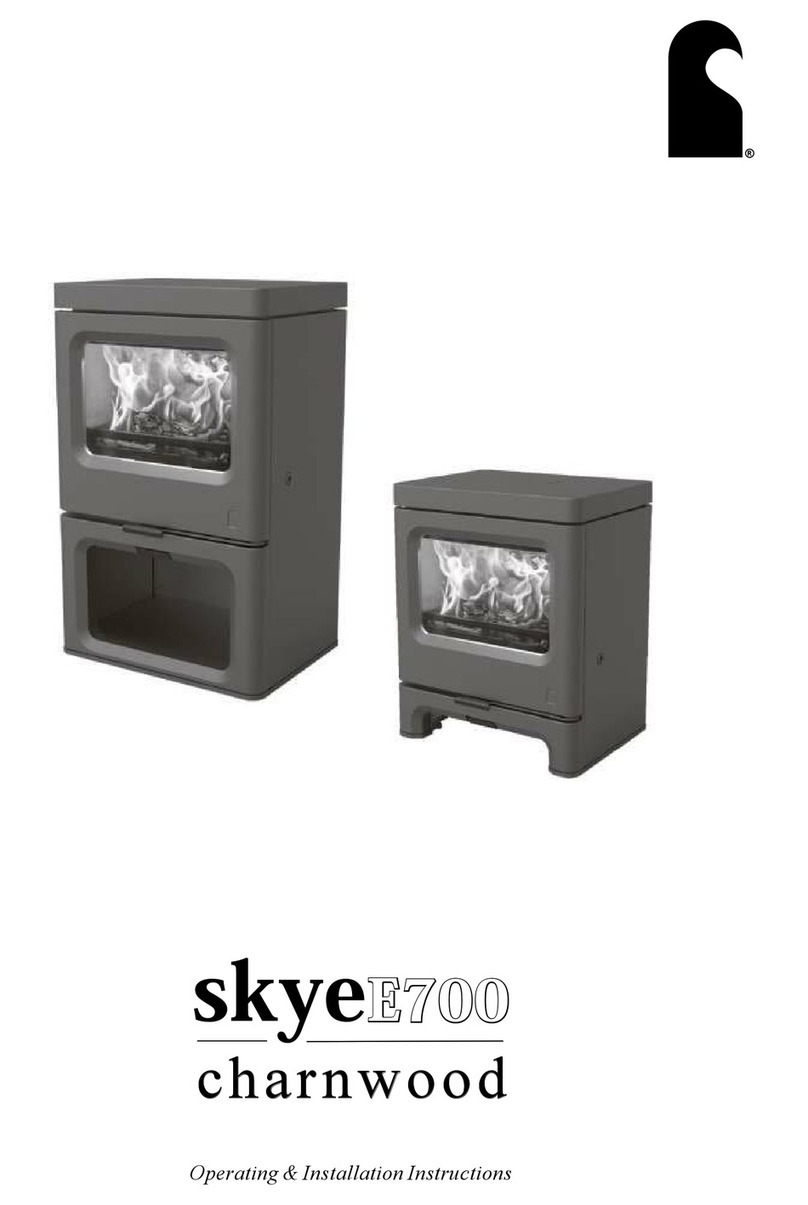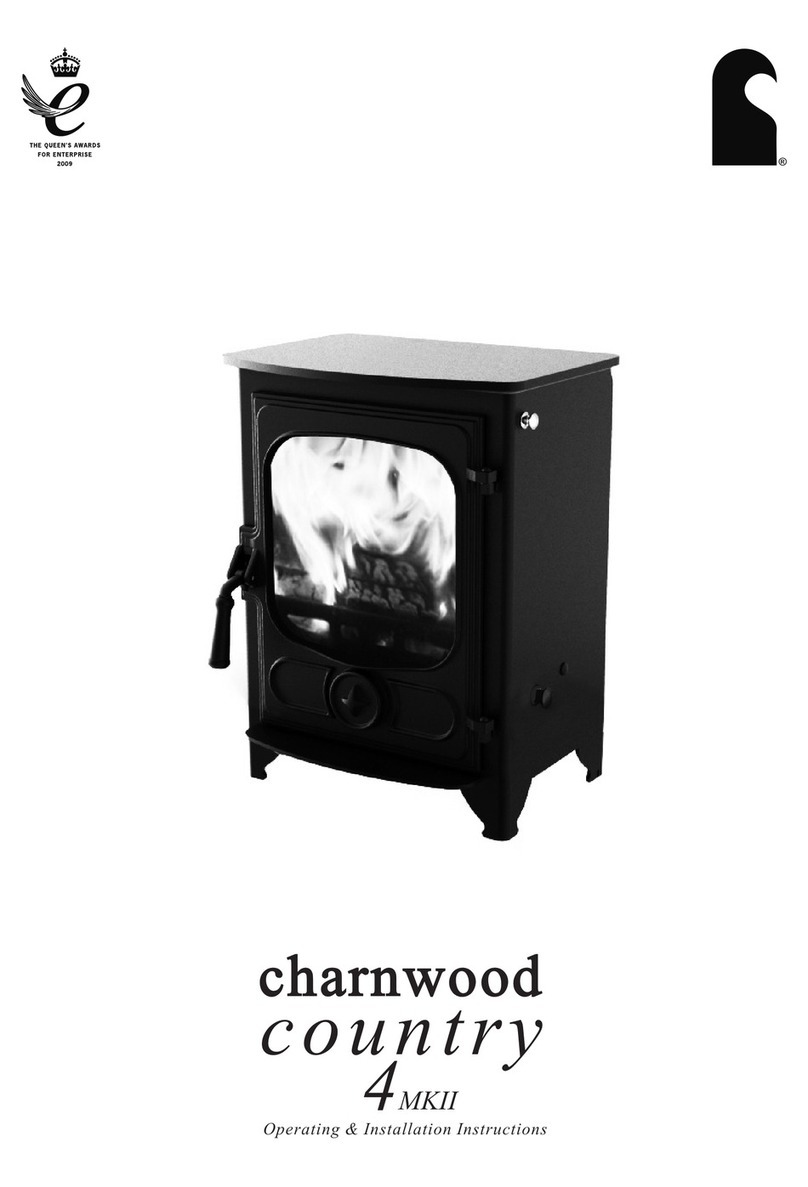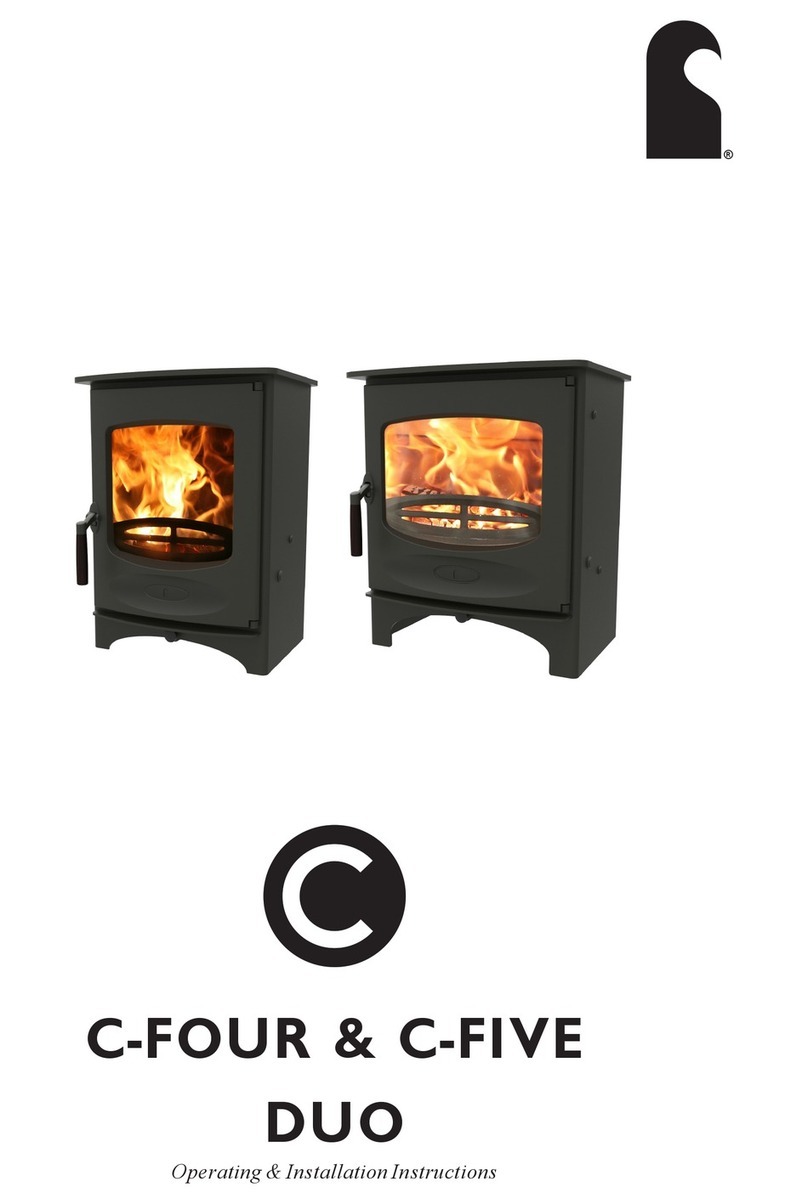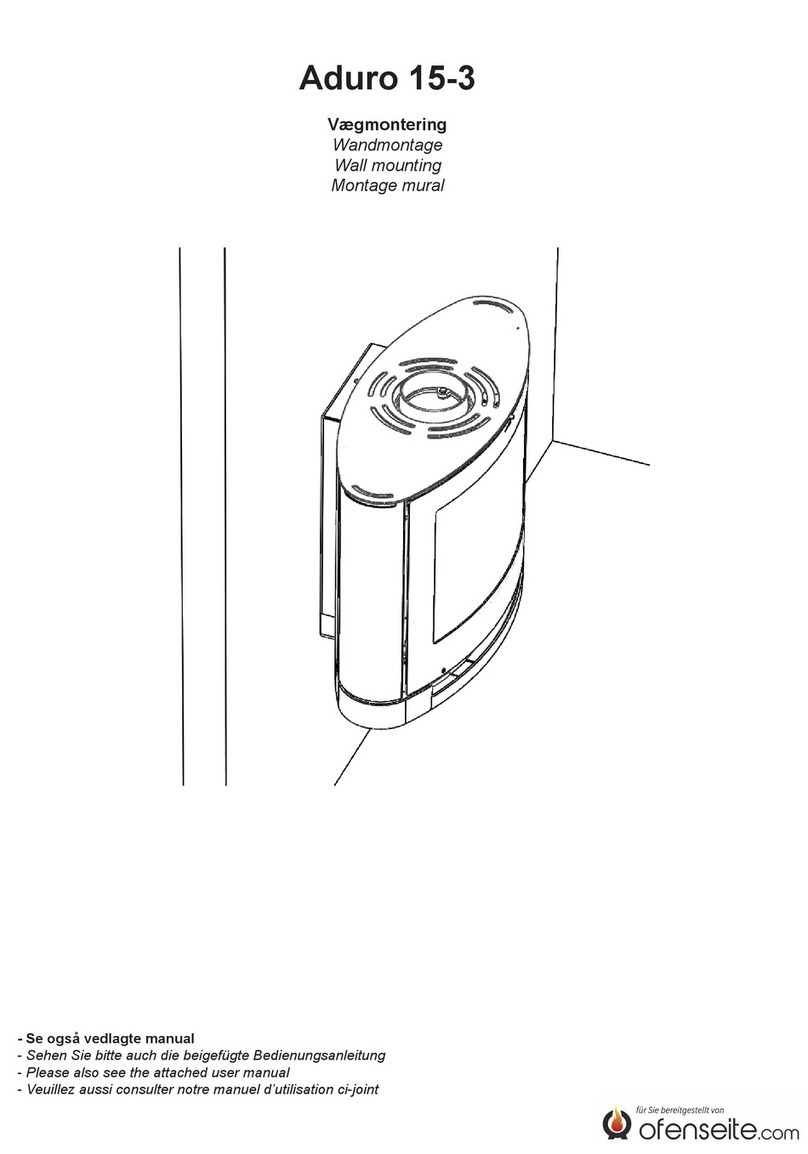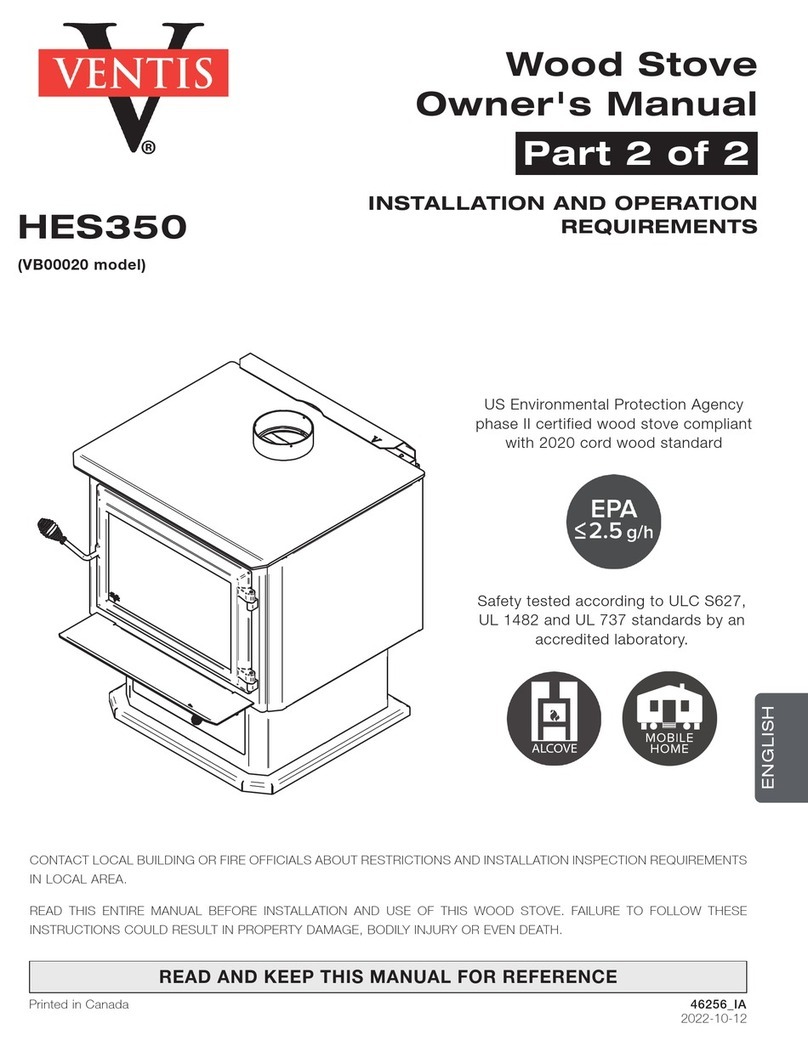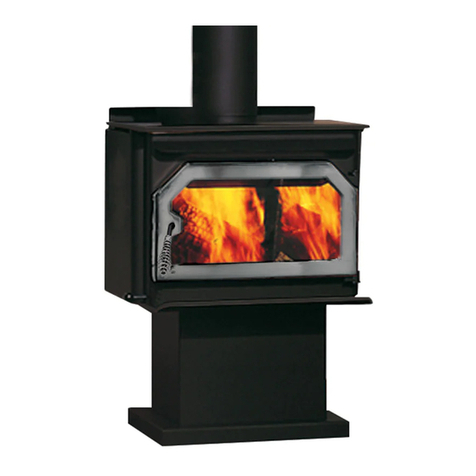TROUBLE SHOOTING
Fire Will Not Burn
Blackening of Glass
Fume Emission
Check that:
a) the air inlet is not obstructed in any way,
b) chimneys and flueways are clear,
c) a suitable fuel is being used,
d) there is an adequate air supply into the room,
e) an extractor fan is not fitted in the same room as the stove.
f) there is sufficient draw in the chimney (once the chimney is warm a
draught reading of at least 0.10 inches water gauge (25Pa) should be
obtained).
Keeping the glass clean requires a certain amount of experimentation
due to the differences in the draw of different chimneys. The following
points should be noted and with a little care should enable the glass to
be kept clean in most situations:
a) The airwash relies on a supply of heated air to keep the glass clean,
therefore, when lighting the stove allow the fire bed to become well
established before closing the air control. This also applies when
re-fuelling the stove.
b) When re-fuelling keep the fuel as far back from the front firebar as
possible, do not try to fit too much fuel into the firebox.
c) Wet wood or logs overhanging the front firebars will cause the
glass to blacken.
d) There is a bypass slide that can be adjusted to suit the particular
installation. This allows a small amount of airwash air to enter the
stove even when the air control is closed. This can be adjusted to help
with keeping the glass clean when the fire is slumbering.
Please note it is more likely to be difficult to keep the glass clean
when running the stove very slowly for long periods.
Check that all flue connections are well sealed. It is also important that
the chimney draw is sufficient, (when the chimney is warm a draught
reading of at least 0.10 inches water gauge (25pa) should be
obtained), and that it is not affected by down-draught.
WARNING NOTE: Properly installed and operated this appliance
will not emit fumes. Occasional fumes from de-ashing and
re-fuelling may occur. Persistent fume emission is potentially
dangerous and must not be tolerated. If fume emission does
persist, then the following immediate actions should be taken:
a) Open doors and windows to ventilate the room and then leave
the premises.
b) Let the fire go out.
c) Check for flue or chimney blockage, and clean if required.
d) Do not attempt to re-light the fire until the cause of fume
emission has been identified, if necessary seek professional advice.
The most common cause of fume emission is flueway or chimney
blockage. For your own safety these must be kept clean.
Your installer should have fitted a CO alarm in the same room as the
appliance. If the alarm sounds unexpectedly, follow the instructions
given under “Warning Note” above.
Check that:
a) The door is tightly closed.
b) The air control is pushed in.
c) A suitable fuel is being used.
d) Door seals and air control slides are sealing.
e) The ash flap is sealing.
CO Alarm
Chimney Fires
Fire blazing out of control
If the chimney is thoroughly and regularly swept, chimney fires should
not occur. However, if a chimney fire does occur push the air control
in fully and tightly close the door of the appliance. This should cause
the chimney fire to go out in which case the control should be kept
closed until the stove has gone out. The chimney and flueways should
then be cleaned. If the chimney fire does not go out when the above
action is taken then the fire brigade should be called immediately.
After a chimney fire the chimney should be carefully examined for
any damage. Expert advice should be sought if necessary.
IF YOU NEED FURTHER HELP
If you need further help with your Charnwood Tor or Tor Pico then
your Installer will be able to provide the answers to most questions.
Your Local Charnwood Premier Dealer has a great deal of experience
and will also be able to provide helpful advice. Further help is available
from the Charnwood Customer Services department who will be
pleased to give advice, if necessary.
®
charnwood
OPERATING INSTRUCTIONS
7
TOR &
TOR PICO
